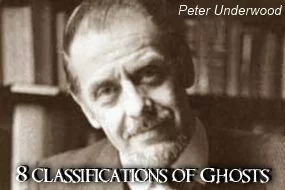 When we think of ghosts, traditionally, our minds typically envision apparitions of the deceased who haunt the living. But there is more than one type of specter found in the variety of accounts we have uncovered. And this doesn't include differences in how a traditional ghost might manifest, per se (e.g. types of ghosts: shadow forms, balls of light, see-through entities, mists, etc.).
When we think of ghosts, traditionally, our minds typically envision apparitions of the deceased who haunt the living. But there is more than one type of specter found in the variety of accounts we have uncovered. And this doesn't include differences in how a traditional ghost might manifest, per se (e.g. types of ghosts: shadow forms, balls of light, see-through entities, mists, etc.).
There really seems to exist a variety of ghosts, at least, in the descriptions of encounters. And, perhaps, the differences are the result of how ghosts are actually seen (e.g. Visiting spirits? Past events? Time-space hiccups? Hallucinations? Mental projections? Something else?).
According to noted parapsychologist, Peter Underwood, there are 8 classifications of ghosts:
- Ghosts of the Living - seeing phantoms of living people, who have not died (aka a 'doppelganger'), that seems to suggest that some ghosts might be mental projections
- Time Slips - an experience where the witness seemingly steps back into a foregone time, interacting with people and the environment
- Haunted Inanimate Objects - unexplained, supernatural behavior, such as movement, of objects that are not alive (see Can Objects Be Haunted?)
- Crisis Apparitions - seeing recently departed loved ones, often hallucinations and a common part of the grieving process (see Ghosts of Grief)
- Mental Imprint Manifestations - energy imprinted on an environment from past events (see What Is a Residual Haunting?)
- Historical Ghosts - traditional ghosts; people (or animals) who have died whose souls interact with those of us who are alive (see What Are Ghosts?)
- Poltergeists - noisy ghosts whose origin still remains a mystery in many cases (see Poltergeist Haunting)
-
Elementals - thought to be primitive entities, ghosts that are often connected to places of burial (see Angel Terms)
Sources
Peter Underwood, author and paranormalist
Roger Clarke, Ghosts (2012)
